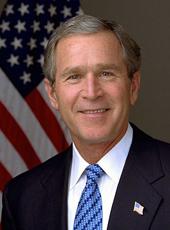Today, The Government Released New Jobs Figures – 121,000 Jobs Created In June. The economy has created about 1.85 million jobs over the past 12 months – and more than 5.4 million since August 2003. The unemployment rate is 4.6 percent – lower than the average of the 1960s, 1970s, 1980s, and 1990s.
The Economy Remains Strong, And The Outlook Is Favorable
- Since 2004, The U.S. Has Created About Twice The Number Of Jobs As The Rest Of The G-7 Countries Combined.
- Employment Increased In 48 States Over The Past 12 Months Ending In May. Nonfarm payroll employment increased in 33 states in May.
- Real GDP Grew At An Annual Rate Of 5.6 Percent For The First Quarter Of This Year. This is the fastest growth in two-and-a-half years and even stronger than previous estimates. It follows economic growth of 3.5 percent in 2005 – the fastest rate of any major industrialized nation.
- Productivity Increased At A Strong Annual Rate Of 3.7 Percent In The First Quarter. Productivity growth during the past five years has been at the fastest rate in nearly four decades.
- Real Hourly Compensation Rose At A 3.2 Percent Annual Rate In The First Quarter.
- Real Consumer Spending Increased At An Annual Rate Of 5.1 Percent In The First Quarter.
- Industrial Production Increased 4.3 Percent Over The Past 12 Months.
President Bush Has An Aggressive Agenda To Create Jobs And Keep The Economy Growing
Growing The Economy And Reducing The Deficit Depend On Controlling The Spending Appetite Of The Federal Government. Every year since the President took office, the Administration has slowed the growth of discretionary spending that is not related to the military or homeland security. The President's last two budgets cut discretionary spending that was unrelated to the military or homeland security, and we are on track to cut the deficit in half by 2009.
President Bush Is Calling On The Senate To Join The House And Quickly Pass The Line-Item Veto, So He Can Sign It Into Law. The line-item veto, already passed by the House, would allow Presidents to target wasteful spending in large spending bills. It is an essential part of the President's strategy to reform the budget process and enhance spending discipline.
The President Has Expanded Tax Relief And Is Working To Make His Tax Relief Permanent. In May, President Bush signed into law a bill that extends the tax cuts on dividends and capital gains. This legislation also contains an Alternative Minimum Tax (AMT) patch enabling millions of middle-income families to avoid paying higher taxes in 2006.
The President's Tax Relief Has Helped Spur Growth By Keeping $880 Billion In The Pockets Of American Taxpayers. The Administration reduced taxes for every American who pays income taxes, doubled the child tax credit, reduced the marriage penalty, created investment incentives for small businesses, and put the death tax on the road to extinction.
Strong Growth Is Helping Raise More Tax Revenues For The Federal Government. In 2005, tax revenues grew by $274 billion, or nearly 15 percent - the largest increase in 24 years. The economy is continuing to grow, and tax revenues are growing with it. So far this year, tax revenues are 13 percent higher than they were at the same point last year, which is significantly better than projected.
Henry Paulson Will Be Sworn-In As Treasury Secretary This Coming Monday. Paulson has an intimate knowledge of financial markets and an ability to explain economic issues in clear terms. For the past eight years, Paulson has served as Chairman and Chief Executive Officer of the Goldman Sachs Group, one of the most respected firms on Wall Street.
George W. Bush, Fact Sheet: Job Creation Continues - 5.4 Million Jobs Created Since August 2003 Online by Gerhard Peters and John T. Woolley, The American Presidency Project https://www.presidency.ucsb.edu/node/283234

